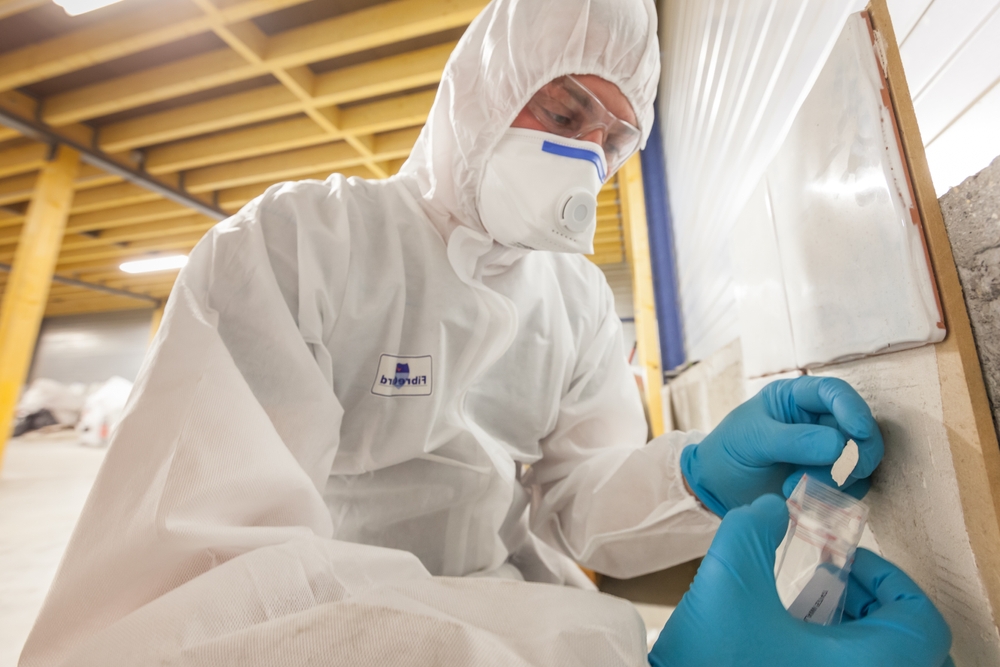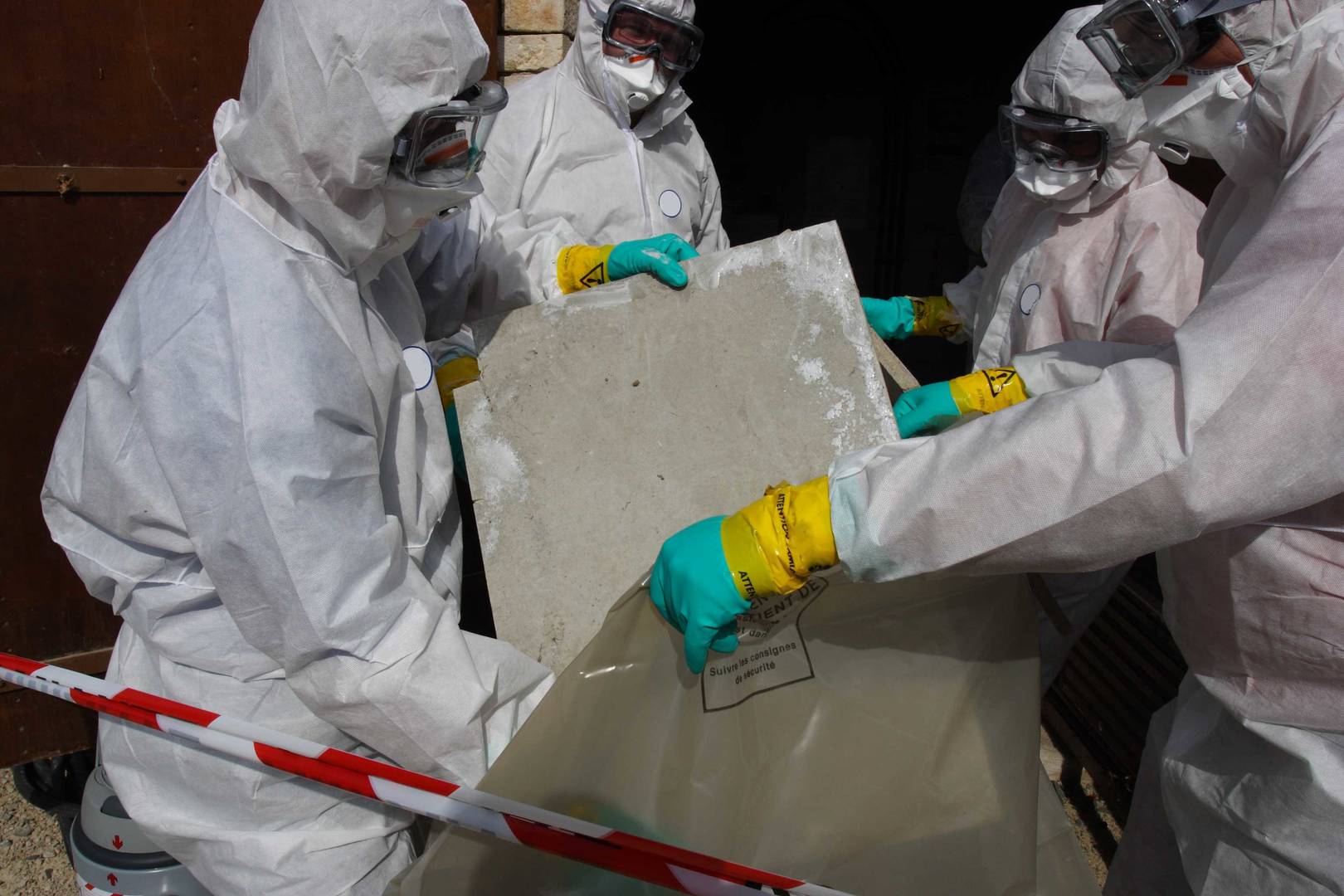Asbestos Testing: Crucial Steps for a Safe Living Environment
Asbestos Testing: Crucial Steps for a Safe Living Environment
Blog Article
The Full Refine of Accredited Asbestos Examining to Make Certain Residential Property Conformity
In the realm of residential or commercial property monitoring and compliance, the procedure of certified asbestos screening stands as an important component to make certain the safety and wellness of passengers. Recognizing the intricate steps included in this screening protocol is critical for residential or commercial property owners and supervisors alike. From the initial assessment to the final analysis of results, each stage plays an essential role in figuring out the existence of asbestos within a building. Allow's discover just how this thorough procedure unravels to guarantee adherence to rigid regulations and protect versus potential health and wellness risks.
Accredited Asbestos Testing: Initial Assessment
In carrying out the initial analysis for accredited asbestos screening, a meticulous evaluation of the residential or commercial property's materials is imperative to properly determine potential asbestos-containing products. Special focus is provided to materials that are prone to damage or disturbance, as these scenarios can launch damaging asbestos fibers right into the air.
Certified asbestos assessors comply with rigorous methods set by regulative bodies to make certain the accuracy and dependability of the testing procedure. By carefully recording findings and making use of advanced screening methods, assessors can give homeowner with a detailed report outlining the visibility of asbestos, if any, and the suggested actions for reduction or elimination. This first analysis establishes the structure for succeeding actions to address asbestos worries and make certain the safety and security and conformity of the residential or commercial property.
Sample Collection Treatments for Asbestos Examining
Effective sample collection treatments are necessary in making certain accurate asbestos testing results and conformity with governing criteria. When accumulating examples for asbestos testing, it is essential to adhere to strict methods to decrease the risk of contamination and ensure the reliability of the outcomes.
First of all, it is necessary to recognize the believed asbestos-containing products (ACMs) and focus on sampling locations based on factors such as the product's problem, ease of access, and potential for disturbance. Asbestos Testing. Examples should be collected from numerous locations within the residential property to provide a comprehensive assessment of asbestos presence
Throughout sample collection, licensed experts ought to use ideal personal protective devices (PPE) to secure against asbestos exposure. They need to make use of tidy devices, such as non reusable gloves and plastic sheet, to stop cross-contamination in between examples. Samples must be meticulously collected making use of a specified method, such as damp wiping or coring, and firmly secured in closed containers to preserve their stability throughout transportation to the research laboratory for analysis.
Research Laboratory Analysis Process for Asbestos Examples
Upon conclusion of the example collection process, the asbestos samples are thoroughly delivered to approved labs for meticulous analysis. At the laboratory, educated specialists take care of the samples with severe treatment to protect against any kind of cross-contamination or sample deterioration. The primary step busy analysis process is sample prep work, where the gathered examples are very carefully refined to draw out the asbestos fibers. Asbestos Testing. This step is critical to make sure exact results in the subsequent analysis.

Once the analysis is complete, a detailed record is created, detailing the findings and validating whether asbestos exists, the kind of asbestos fibers determined, and the focus levels. This information is vital for residential or commercial property proprietors to take the required steps to make certain compliance with asbestos guidelines and guard the health and wellness of owners.

Coverage and Analysis of Asbestos Test Results
Recognized asbestos testing laboratories supply detailed records that use important understandings right into the visibility, kind, and focus degrees of asbestos fibers located in examples accumulated from properties. These records are vital for homeowner and supervisors to understand the threat presented by asbestos and make informed choices regarding its administration or removal. The records commonly include information on the approaches used for testing, the locations from which examples were taken, the type of asbestos determined (such as chrysotile, More hints amosite, or crocidolite), and the concentration levels of asbestos fibers spotted.
Interpreting these results calls for expertise to analyze the potential wellness risks connected with asbestos exposure, establish the appropriate strategy, and make sure regulative compliance (Asbestos Testing). Depending on the searchings for, suggestions may vary from proceeded surveillance and maintenance to encapsulation or complete asbestos abatement. Homeowner should very carefully evaluate these records and seek advice from with asbestos professionals to create a detailed plan for addressing any type of asbestos concerns recognized
Ensuring Residential Property Compliance With Asbestos Regulations
To preserve adherence with asbestos regulations, residential property proprietors Visit Website must vigilantly carry out steps to ensure compliance with applicable regulations and guidelines. When asbestos is determined, residential or commercial property owners should follow asbestos monitoring prepares that outline proper containment, removal, or encapsulation treatments to stop exposure and spread of asbestos fibers.
Homeowner ought to offer asbestos awareness training to staff members and owners to minimize the threat of asbestos exposure and ensure correct handling of products that may have asbestos. Furthermore, it is crucial to stay informed about any type of updates or modifications in asbestos policies to change administration methods accordingly. By proactively addressing asbestos conformity requirements, residential or commercial property owners can create a you can try here safe atmosphere for occupants and reduce possible lawful and health and wellness dangers connected with asbestos exposure.
Verdict
Finally, certified asbestos testing is an important process for ensuring residential or commercial property compliance with guidelines. The first assessment, sample collection procedures, laboratory evaluation, and analysis of results are very important actions in this process. By following these treatments, homeowner can determine and deal with any kind of asbestos threats existing, shielding the health and wellness of occupants and preserving compliance with governing needs.
Report this page